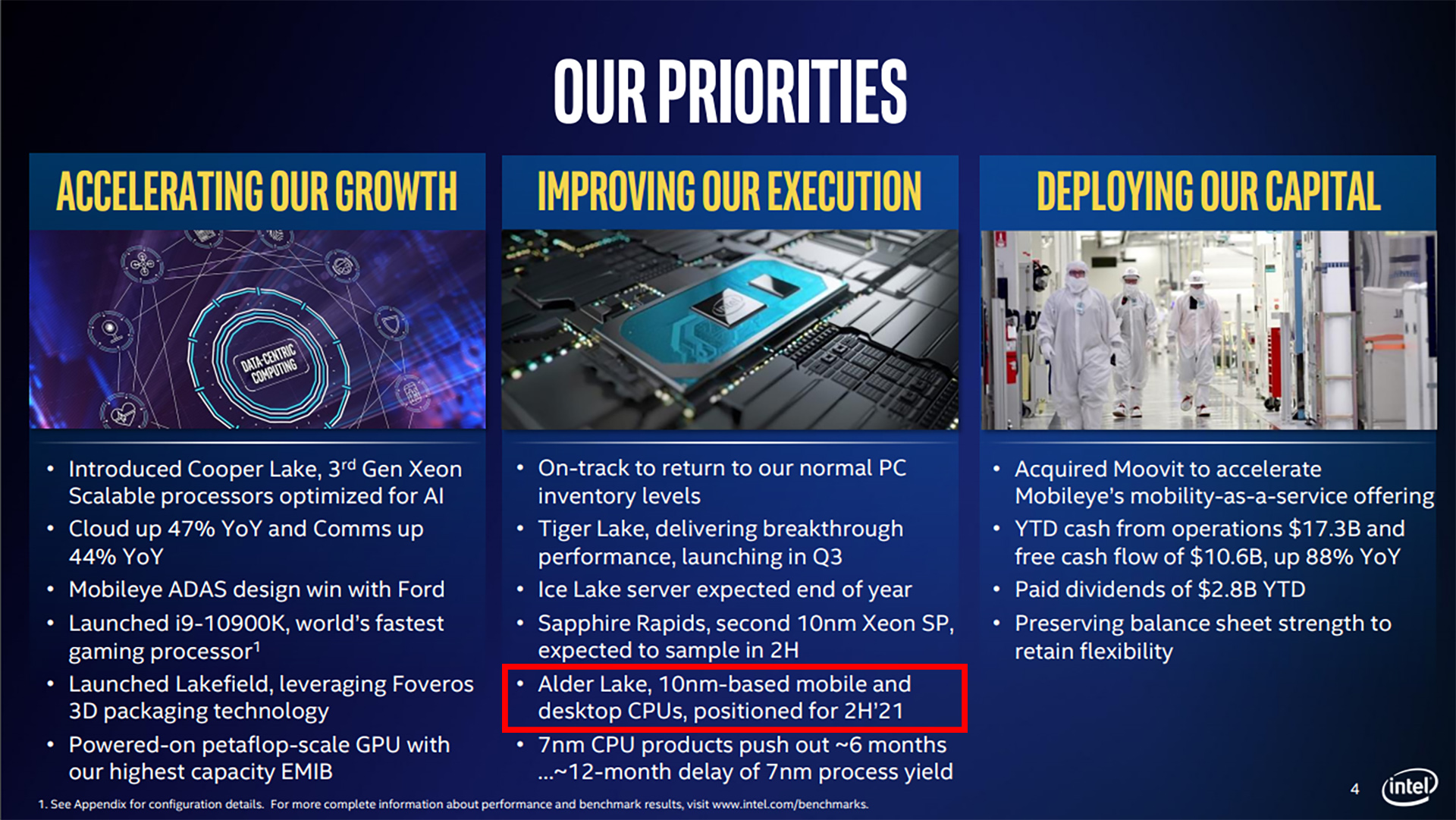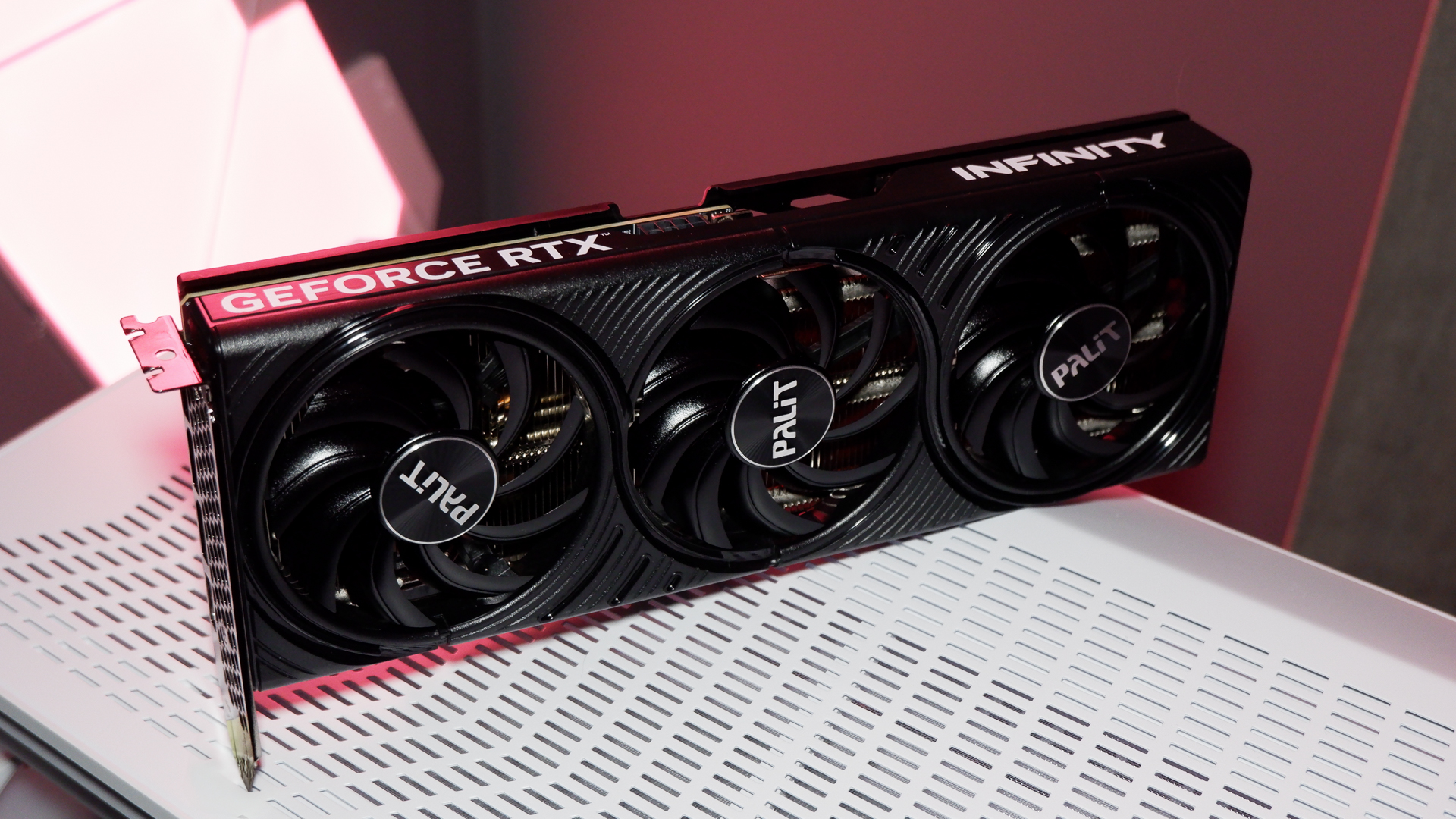Intel's manufacturing is broken and new Rocket Lake CPUs prove it
The next six months are make or break as Intel hurtles towards existential crisis.

Intel Rocket Lake CPUs prove the company is in a crisis of existential proportions. The next six months will decide both its fate and the future direction of the PC as a whole. Hyperbolic? Much? Actually, no.

Best CPU for gaming: the top chips from Intel and AMD
Best graphics card: your perfect pixel-pusher awaits
Best SSD for gaming: get into the game ahead of the rest
It’s a somewhat speculative interpretation, to be sure. But tales of Intel’s woes have become so routine of late that the very existence of Rocket Lake and what it implies has been largely overlooked. Rocket Lake says very, very bad things about the viability of Intel’s entire business model. And that, in turn, makes it very significant for the PC as a whole.
Rocket Lake, of course, is Intel’s next desktop CPU architecture. It’s essentially a 14nm backport of Intel’s 10nm Sunny Cove CPU core architecture, as seen in 10th Gen Ice Lake notebook chips. Rocket Lake won’t be released until next year, which means Intel will be launching a new CPU design in 2021 on the ancient 14nm node. Intel’s original plan was to move to 10nm in 2016. Yes, really.
Intel has sold the whole ‘backporting’ thing as a positive, a sort of groovy and inclusive approach to CPU manufacturing. “Hey guys, relax. We’re flexible, we can port from node to node. It’s freestyle. It’s all good,” Intel seems to be saying.
The reality is that there’s really no such thing as a node-agnostic CPU architecture. It’s going to cost a huge amount of money to port those Sunny Cove cores, PCI Express 4.0 I/O and Xe-based graphics to 14nm for Rocket Lake.
So, it’s not groovy or flexible. It’s a move made out of desperation because Intel’s 10nm production node still isn’t good enough for the prime time. Let’s repeat that. Rocket Lake will be launched in 2021 in 14nm because Intel’s 10nm still won’t be good enough for a desktop CPU launch.

That’s going to come at a cost. For Rocket Lake, Intel is regressing from 10 cores, as seen in the current Core i9-10900K, back to eight cores. Because those Sunny Cove cores were never intended for 14nm. And they’re big and fat and power hungry when ported to 14nm.
The biggest gaming news, reviews and hardware deals
Keep up to date with the most important stories and the best deals, as picked by the PC Gamer team.
There are further factors that make Rocket Lake look plain odd. In September, Intel officially confirmed an eight-core ‘H’ version of its latest 10nm Tiger Lake laptop chips exists. It’s a CPU that would make Rocket Lake totally redundant. So why doesn’t Intel launch that chip on the desktop instead of Rocket Lake? The only plausible reason is that 10nm remains fundamentally broken.
As a short term stop gap, Rocket Lake probably just about makes sense, even if Intel’s marketing pitch for the step back to eight cores is almost certainly going to make your ears bleed. But further out, this ‘backporting’ shizzle surely isn’t a goer.
Currently, Intel says its first 10nm desktop CPU will be Alder Lake, due in the second half of next year. That’s the one with the new big.LITTLE hybrid architecture and up to eight performance cores and eight efficiency cores. If backporting Ice Lake to 14nm came with compromises, backporting Alder Lake to 14nm would surely be even less appealing.
In short, Alder Lake probably has to be on 10nm to be viable. But there are no signs at all that Intel’s 10nm is going to be good enough in a little over six months. It’s worth remembering that, to date, Intel is still only selling quad-core mobile CPUs on 10nm. The launch of the 10nm Ice Lake-SP server chip, once due in 2019, has been delayed once again into early 2021. And you’d be brave to assume it’ll hit that deadline.
What’s more, earlier this summer Intel conceded that its 7nm node, once touted as the solution to all its 10nm woes, was behind schedule by what it characterised as a full year. 7nm won’t be on stream until at least late 2022. Being realistic, then, 2023 is the earliest you’ll see Intel 7nm processors. And if you had to bet, you probably wouldn't fancy 2023 much.

Meanwhile, the Taiwanese chip foundry that powers many of Intel’s competitors, TSMC, seems to be going from strength to strength. Admittedly, direct comparisons of production nodes are tricky. Most observers agree that Intel’s 10nm node is equivalent to TSMC’s 7nm for transistor density. But you can, today, buy actual shipping consumer products powered by fairly large, complex chips built on not only TSMC 7nm but TSMC 5nm.
Fair to say, then, that TSMC 5nm looks healthier than Intel 10nm right now. Which puts TSMC not just one but two full nodes ahead. That is an awful indictment of Intel’s predicament.
Anyway, the long and short of it is that Intel is rapidly approaching a crunch point of existential proportions. It can probably just about get away with Rocket Lake. But if it can’t bend 10nm into some kind of shape in time for Alder Lake in the second half of 2021 then it’s entire future roadmap becomes non-viable and Intel will surely have to seriously consider the previously unthinkable. Namely, giving up on making its own chips and farming them out to a third party foundry. At which point it’s no longer Intel as we knew it.
Indeed, there’s a good chance Intel has either already made that call or is right in the thick of thrashing it out. It’s just possible Intel has already decided to make that fundamental strategic shift, to not invest the billions required to make 7nm happen, but to spend that money turning itself into an IP-based business like AMD rather than what it is today—a manufacturing business that needs in-house chip designs to keep those billion-dollar fabs fed.
Of course, speculation about future events is often a mug’s game. It can take years for events to unfold. But this time it’s different. Intel is approaching that existential crunch point and fast. Six months from now, we’ll know if Intel has turned things around. Or if the fundamental technological landscape that underpins the PC we love is about to go through a dramatic change.

Jeremy has been writing about technology and PCs since the 90nm Netburst era (Google it!) and enjoys nothing more than a serious dissertation on the finer points of monitor input lag and overshoot followed by a forensic examination of advanced lithography. Or maybe he just likes machines that go “ping!” He also has a thing for tennis and cars.

